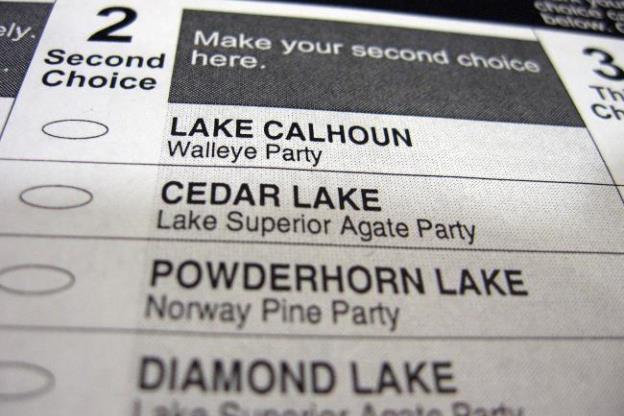
Instant-runoff Voting: When I drank the Kool-Aid
I’m going to be writing a lot about instant-runoff voting in the future, because the city of Minneapolis will be using it this year for just the second time, and more importantly, there is an open Mayor’s seat that will be contested using the system.
This election year then will be the first big test of instant-runoff voting (IRV) in Minnesota.
To begin I’m going to do the same thing I did when I started my series of posts on redistricting a number of years ago and republish an old piece of mine. I’m copying what I did for the redistricting series by copying an old post. The level of creativity involved in such an endeavor is surely beyond quantification.
This was actually the very first bloggey type thing I ever wrote and that’s pretty evident in the quality of the prose. If you think I’m a bad writer now, and I certainly have my detractors, holy sweet Jesus was I a bad writer five years ago.
The point of re-posting this is not to make fun of my terrible prose, although it really is terrible, the point rather is to be up-front with the fact that five years ago I had drunk the IRV Kool-Aid.
Anyway, that post was a response to a post by Minnesota Progressive Project co-proprietor Joe Bodell. So first I’ll quote some of that piece:
For whatever reason — perhaps the upcoming municipal elections in which Instant Runoff Voting may or may not be used in the city of Minneapolis — I’ve been hearing a lot of chatter about IRV and how it could be a godsend for DFLers worried about getting killed by a third-party campaign stealing just enough votes to hand another election to the Republican.
It’s driving me a little nuts to hear this talk.
In a one-party-dominant situation, as exists in many cities like Minneapolis, St. Paul, Duluth, and others across the country, it might not be such a bad idea. I question the utility of the practice, since the DFL’s index — its bottom-line, we’re-only-getting-hardcore-Dems-and-no-one-else vote expectation — is at or above 50% in many parts of the cities, and turnout is already pretty high. But IRV wouldn’t necessarily hurt anything in these areas.
However, in the suburbs? Statewide? Why would we want to give people any reason to consider a candidate from a party other than our own?
That post prompted this response from me:
While I personally have no experience with IRV, it’s a concept that deserves to be looked at for the upside it brings. Among it’s advantages, IRV will help to reduce the third party spoiler effect, reduce negative campaigning and the winner will win with a majority of the votes.
In his post Joe made the case against IRV by claiming it could actually help third party candidates. In practice IRV tends to help the major party candidate with the most broad support. Third party candidates don’t tend to have broad support because they don’t always have the resources to get their message out. You may have a few voters get the courage to vote for third party candidates because of IRV, but ultimately the effect will be that these people’s second or third choice will be the one that counts.
Because of this need for a broad support among the electorate, and candidates needing to appeal to as many voters as possible, IRV reduces negative campaigning. When you have to build a majority coalition to win, even if it’s based on second-choice votes, there is much less of an incentive to attack your opponent because you want his supporters to put you down for number 2.
The end result of IRV, is that the winner will have received the support of a majority of voters, not just a plurality. Regardless of who emerges from the recount as the winner, we will have a Senator who received only 42% of the vote. Jesse Ventura won with 37% of the vote. Having the support of a majority of voters will only help the winning candidate to govern more effectively, as well as encourage them to work for all of their constituents, not just their base.
These are all good reasons to give IRV a try, in fact they were all issues that appeared in this election cycle. It can be argued that Bob Anderson cost the DFL a house seat. It’s certainly conceivable that Tinklenberg could have won that race with IRV. We suffered through one of the most vicious Senate campaigns the state has seen, not to mention all the Madia/Paulson and later Bachmann/Tinklenberg ads. It was a truly vile election season. And all of those races, the Senate, CD6 and CD3 resulted in a plurality winner.
After this election cycle, IRV looks better and better.
I’ll end on this. One of the first points Joe made in his post was:
Why would we want to give people any reason to consider a candidate from a party other than our own?
To that I say; are we so unsure of our ideas that we think people will run from the DFL if given another choice?
I’ll give myself a pass for the rather dismal analysis since it was after all my very firstest bloggey type post. But let’s just say that my analysis reaks of the stank of the true believer. The next post in this series then, will be an effort to dismantle my argument from five years ago, since I am now decidedly not a true believer.
Thanks for your feedback. If we like what you have to say, it may appear in a future post of reader reactions.


